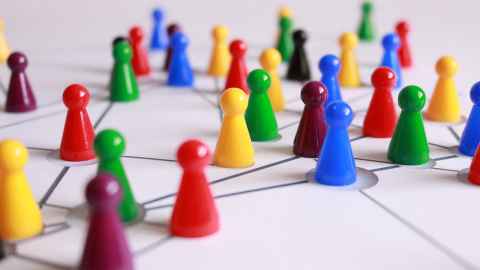Contacts, community transmission and clusters explained
24 August 2020
Opinion: With the re-emergence of Covid-19 in Aotearoa, here’s a reminder from Associate Professor Siouxsie Wiles of what some of the most important epidemiology terms we’re hearing actually mean.

Contacts
Let’s start with close and casual contacts. A contact is basically a person who has had some kind of encounter with someone who has or is suspected of having Covid-19. People are considered to be a close contact if that encounter means there was a higher chance of the virus spreading from person-to-person. That means close contacts are usually people who live in the same household as a case, or work at the same place.
It’s now thought the main way the virus spreads is person-to-person through breathing, talking, singing, and shouting, as well as through coughing and sneezing. That means you can also be considered a close contact if you’ve spent more than 15 minutes being closer than about two metres from someone who is infectious.
You may also be considered a close contact if you’ve been further than two metres from someone infectious, but in a more “risky” environment. This could be somewhere indoors like a noisy restaurant, or in a church or a classroom, or on public transport or sitting within a couple of rows of someone on a plane. Some outdoor environments may count too if people are crowded together. Close contacts are likely to be asked to self-isolate for 14 days and get tested to see if they have the coronavirus. Because people are infectious for a few days before they develop symptoms, this self-isolation is how we prevent transmission chains from growing.
A casual contact is someone who has a much lower chance of picking up the virus from their encounter. That might be because the person with Covid-19 was unlikely to be infectious at the time, or because they were only face-to-face for a short period of time. Or it might be that while they were in the same place at the same time, the chances of any virus transmitting were really low. They might, for example, have been at the supermarket at the same time but not even passed each other in the aisles.
Casual contacts probably won’t be asked to self-isolate but will be asked to keep an eye out for any symptoms. If they do develop symptoms it’s obviously really critical that they contact Healthline or their GP to see about getting tested.
Community transmission
Another phrase we’re hearing a lot of at the moment is community transmission. Think of New Zealand as currently being divided into two camps. There are all the people who work at or closely interact with people at the border or in managed isolation and quarantine facilities. We’ll call them the border camp. Then there’s everyone else. We’re the wider community. Any case that starts in the community and can’t be linked to the border is called a case of community transmission.
Because our current government is pursuing an elimination strategy, after Covid-19 first arrived our lockdown got us down to zero cases of community transmission. Over the last few months an incredible effort has gone into developing systems to allow New Zealanders to come home while trying to protect the rest of us from the virus. Thousands of people have passed through our managed isolation and quarantine facilities. It’s an incredible enterprise that’s essentially been built from scratch while in the middle of a crisis.
Clusters
Even with the very strict controls in place at our border there is always the chance that the virus can sneak back in. And if it does, the first we may know of it is by a case popping up in the community. That’s what we’ve seen happen in Auckland. Those cases, taken together, have now become what’s called a cluster – a group of connected cases. And what that Auckland cluster has shown us is how socially connected we all are while we’re living at alert level one – and how quickly transmission chains can grow.
The one thing this latest outbreak has shown us all is that as this pandemic is raging overseas, while it’s our expectation that the government will do all they can to protect us, it’s our responsibility to be on the lookout for any symptoms of Covid-19. The quicker we get tested, the quicker we’ll be able to pick up any border breaches, and the quicker we’ll be able to stamp out the virus.
Associate Professor Siouxsie Wiles is a microbiologist from the Department of Molecular Medicine and Pathology in the Faculty of Medical and Health Sciences' School of Medical Sciences.
This article reflects the opinion of the author and not necessarily the views of the University of Auckland.
Used with permission from The Spinoff, 'Siouxsie Wiles & Toby Morris: Contacts, community transmission and clusters – explained', 22 August 2020.
Media contact
Paul Panckhurst | Media Adviser
Mobile: 022 032 8475
Email: paul.panckhurst@auckland.ac.nz